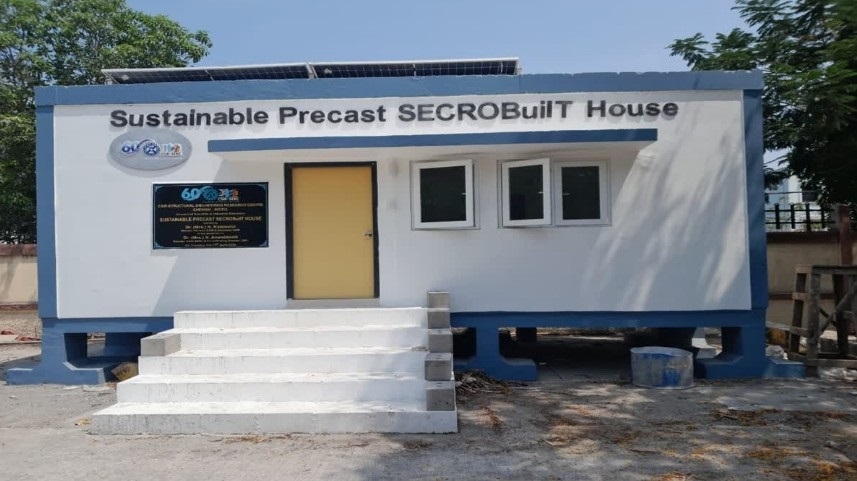Building Blocks Using Calcium Carbide And Fly Ash: CSIR-SERC Develops Lightweight Panels For Durable, Energy Efficient Housing

Building a house is often a time-consuming and
labor-intensive process, especially in rural areas where delays in construction
are common due to material setting times and labor shortages. Even small homes
can take months to complete, largely because each construction stage requires
specific curing periods to ensure structural stability.
The technology used by the scientists at the CSIR's SERC
incorporates industrial byproducts like fly ash and calcium carbide residue
(CaC₂), repurposing waste materials for sustainable construction. The system,
known as EIMB (Eco-Friendly Innovative Modern Building system), uses a new type
of wall structure and bonding mechanism that ensures strength and durability.
To further enhance sustainability, the prototype home
built at the CSIR-SERC campus includes rooftop solar panels, allowing residents
to offset some of the construction costs through energy savings. The structure
supports up to four storeys and is especially suited for mass housing projects
due to its quick assembly and lower labor dependency.
According to CSIR-SERC Director Dr. Anandavalli, this
modern construction technique not only reduces costs but also accelerates
project timelines, making it a promising solution for affordable housing
schemes.
“This structure can build houses up to 4 storeys. This
technology will make it very easy to build more houses quickly,” said
Anandavalli.
Technology Behind CSIR-SERC's Prefabricated Concrete
Panels For Housing
According to the CSIR-SERC, the precast sandwiched
lightweight wall panels are meant for constructing fast, durable and energy
efficient housing and for other industrial requirements.
The technology is aimed to satisfy the industrial
requirements on construction of wall components and has used the indigenously
developed and patented fabricated Steel Eps Concrete Re-Organized Building
Technology (SECROBuilT) with a trained unskilled man power. It is also suitable
for setting up prefabrication in factories.
The SECROBuilT has been developed with good design,
convenient size, sound and heat insulation, 40% lesser weight with high quality
and strength with cost reduction for wall, compared to the conventional walls
in the market.
- High quality precise technology
- Corrosion resistant; rapid construction
- Excellent thermal insulation and is suitable for Indian and international markets
- Sandwiched lightweight; 40% lesser weight
- Suitable for alternate infills; seismic resilient
- High ductility; easy maintenance with longer life
- A complete alternate solution to conventional way of wall construction with 20% cost reduction